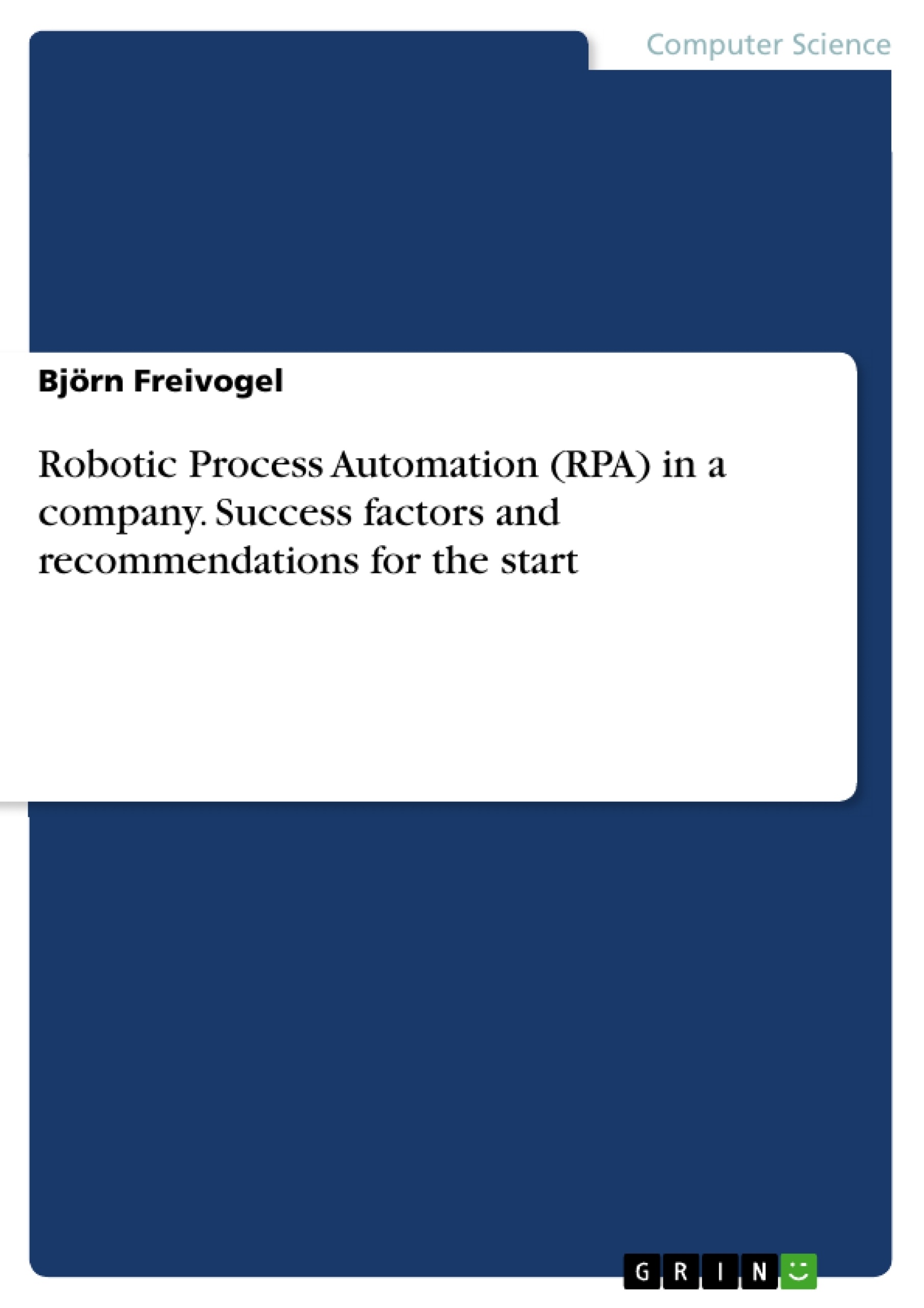Numerous tasks in a company follow a structured process and could be automated. However, they occur too rarely to justify the automation effort. Robotic Process Automation (RPA) aims to change this: By having a robot emulate the input on an existing user interface, no changes are required in the target application. Automation is possible in a timely and cost-effective manner.
So far, many companies have had positive experiences with RPA. However, there are also a number of failed projects. What factors determine success and failure when introducing an RPA system? Björn Freivogel explains how the introduction of robotic process automation succeeds.
He first gives an overview of the topic of RPA and presents the features and functionality of RPA systems. Based on this, he examines which properties suitable processes should have and how important it is to systematically select process candidates. In his publication, Freivogel not only summarizes the theoretical basics, but also gives practical recommendations for the introduction of RPA in the company.
From the content:
- robotic desktop automation;
- agility;
- Agile methodology;
- business process management system;
- BPMS
Table of Contents
- Summary
- Foreword
- Glossary
- 1 Introduction
- 1.1 Starting situation
- 1.2 Research problem
- 1.3 Research question
- 1.4 Objectives, delimitation of content
- 1.5 Structure and procedure
- 2 Theoretical part
- 2.1 Literature research
- 2.2 State of research
- 2.3 RPA Basics
- 2.4 Field of application of RPA
- 2.5 Benefits of RPA
- 2.6 Limits and challenges
- 2.7 Success
- 2.8 Theoretical findings
- 3 Methodological approach
- 3.1 Qualitative research
- 3.2 Guideline interview as expert interview
- 3.3 Procedure
- 3.4 Data collection
- 3.5 Data analysis
Objectives and Key Themes
This thesis aims to explore the success factors involved in the introduction of Robotic Process Automation (RPA) within a company. By analyzing the experiences of successful implementations, it seeks to provide insights and recommendations for organizations considering adopting RPA.
- Importance of a comprehensive vision for RPA deployment
- The role of effective Change Management in employee engagement
- The crucial support of management and their role in promoting RPA adoption
- Early involvement and collaboration with the IT department
- Establishment of a governance structure for successful RPA implementation
Chapter Summaries
The introduction chapter provides context and outlines the research problem, question, objectives, and the structure of the thesis. It explains the current situation regarding RPA adoption and its potential, highlighting the need for a comprehensive understanding of success factors.
The theoretical part delves into the fundamentals of RPA, exploring its characteristics, functionalities, and differentiation from Business Process Management Systems (BPMS). It examines the benefits and limitations of RPA, highlighting potential challenges and success factors based on existing research.
The methodological approach chapter outlines the qualitative research methods employed, including guideline interviews with experts from various stakeholders. It describes the data collection and analysis process, emphasizing the focus on understanding diverse perspectives on RPA implementation.
Keywords
The key concepts and focus topics of this thesis include Robotic Process Automation (RPA), success factors, implementation strategies, change management, IT integration, governance, and expert perspectives. The thesis examines the challenges and opportunities associated with RPA adoption within a company, highlighting the importance of a strategic and collaborative approach to ensure successful implementation.
- Quote paper
- Björn Freivogel (Author), 2020, Robotic Process Automation (RPA) in a company. Success factors and recommendations for the start, Munich, GRIN Verlag, https://www.grin.com/document/1175611




